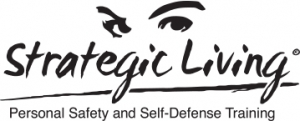Feeling Safety
The last couple of months I’ve written about recognizing (and fixing) boundary violations, finding support, and building community. All are essential aspects of personal safety. And, for my final post of this year (still 2020), I’m turning towards feeling safety, i.e., recognizing what is (or is not) “safety.”
- Safety is situational. We all move through different environments each day. Leaving home, commuting to work or school, going out for lunch, meeting up with some friends in a park afterwards . . . each place has its own levels of safety. What does safety look or feel like for each?
- Safety is making choices. Safety is the ability to navigate your course in life while minimizing the risk of harm. The ability to make informed choices is a prerequisite for sustainable safety.
- Does familiarity = safety? Most of us feel safer in familiar environments. Places we already know, when others we know, like and trust are nearby. “Where everybody knows your name, and they’re always glad you came,” to trot out that old TV sitcom theme. Or even if we are physically alone, we can be on the phone with someone (while we may feel safer, we may not actually be safer). “There’s safety in numbers,” says the cliche. At the same time, most assaults against women are committed by someone known. Over half homicides where the victim is female is committed by a current or former intimate partner. The assailant abuses familiarity to gain access to commit assault.
Think about your different environments. Work. School. Home. Shopping. Commuting. Public space. Social gathering. Maybe you can add something specific to your life. Pick one.
Get out a piece of paper and a pen, or colored pens. Consider how you’d know you’re “safe” in that place. Make a list. It could be bullet-point or mind-map organized, just begin putting thoughts down what safety in a specific space would look and feel like.
I picked Home. Take a look at this video for what I consider important for feeling safety at home. Now do the same yourself. You may come up with similar results, or yours may be different. Regardless, they are your choices. Make them.
Safety at Home from Joanne Factor on Vimeo.
